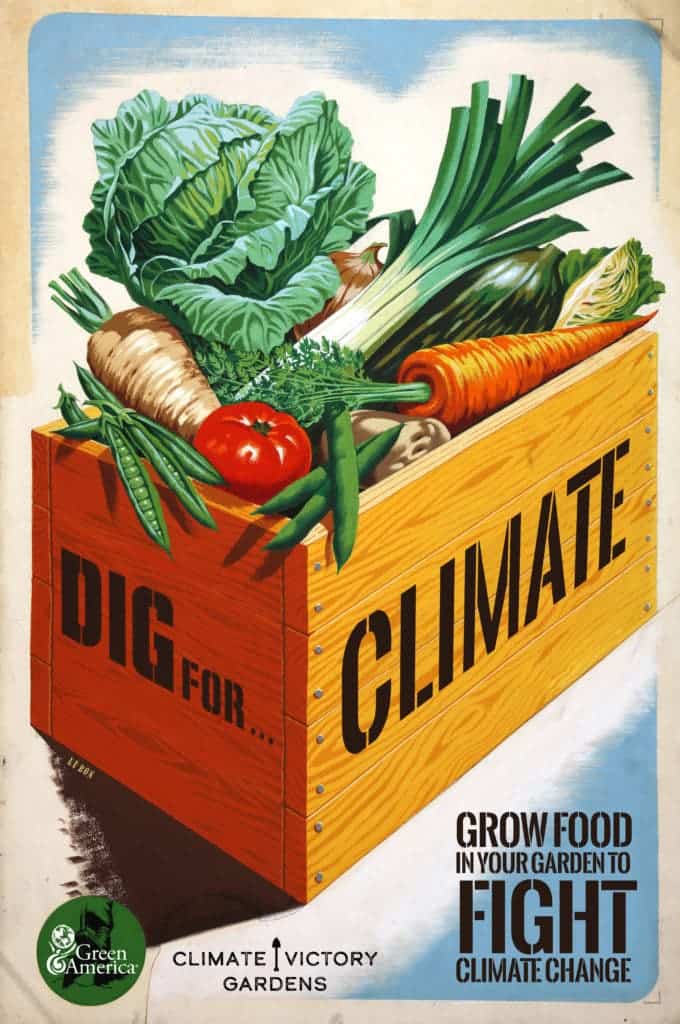A 20th-century idea is being revamped — from the grim world of war into an avenue of public action against climate change.

The country needs you. The world, all of it, needs you. So grab the toughest pair of boots you own, rifle through your old clothes for a sturdy pair of pants, and head out into the field — to plant! At least that’s what you should do if you’re passionate about the planet and/or enjoy growing tasty snacks, says Green America.
This non-profit organization is trying to bring back the victory gardens of World War One and Two in an effort to give us common folk more agency in fighting climate change. Their goal is to sprout 40 million Climate Victory Gardens across the US and produce some 12 million tons of produce each year for the communities that work them.
What’s a Climate Victory Garden?
Both World Wars were fought largely without the means modern agriculture has at its disposal today. Feeding the unprecedented number of combatants, then, was a monumental task for all countries involved. So, in an effort to ease the demand coming from civilians, governments in several countries — the US, Germany, and those in the Commonwealth — actively encouraged the public to plant, maintain, and harvest their own gardens.
In the US, they were known as victory gardens, because even civvies need morale boosters every now and again. But they were far from a simple PR stunt — by 1944, some 20 million victory gardens were producing 8 million tons of food for the US, according to History. They covered roughly 40% of the fresh fruits and vegetables demand in the country at the time, freeing resources for troops on the front. Green America is hoping to revive the concept in a bid to give us common folk some way to pitch in on our planet’s health
“Instead of gardening in support of war efforts, we are gardening to fight climate change,” Green America’s website reads.
Planting your own garden, they explain, is a great way to lower overall carbon emissions and your own environmental footprint. The fruits and veggies you’ll plant will absorb and capture carbon dioxide from the air. Even better, being locally-grown means that the food will be even more sustainable as it won’t have to be transported around (which takes fuel).
Green America hopes to have 40 million such gardens set up, to replicate the scale of the project in WW2 (the US’s population has grown from 132 million in the 1940s to some 323 million today). The organization also encourages practices such as composting, cover crops, perennials, and no-till to boost soil health and improve its ability to sequester carbon.
It might sound like an unrealistic number of gardens — but there are already some 42 million households in America that grow food in some kind of garden, according to a 2014 report from the National Gardening Association. With a few tweaks and some new climate-friendly practices, all of these gardens could become Climate Victory Gardens.
“Americans want to take actions that have a direct impact on climate change. They are also increasingly concerned about the chemicals on store-bought produce, Todd Larsen, executive co-director of consumer and corporate engagement at Green America, said in a press release.
“Climate Victory Gardens gives us all a way to reduce our impact on the planet, while ensuring the food we feed our families is safe and nutritious.”
Green America currently lists over 500 Climate Victory Gardens across the world. You can add yours as well, or commit to one here.






